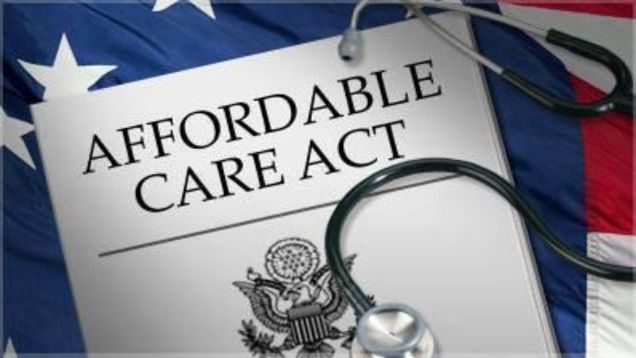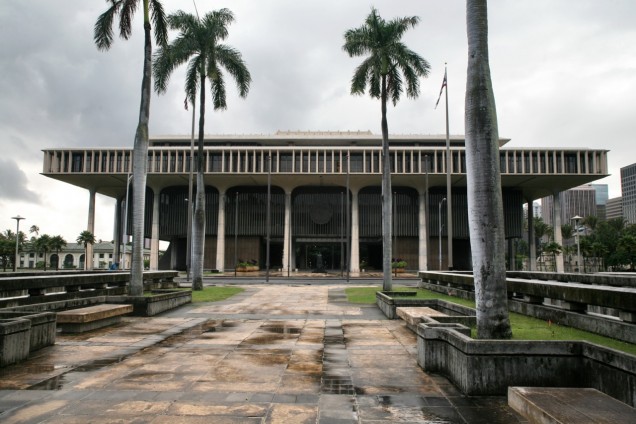Category: News
April 17th, 2019
in Analysis, Local Legislation, News, State Legislation
Massachusetts’s Governor Baker signed An Act Regulating and Insuring Short-Term Rentals on December 28, 2018. The act regulates short-term rentals provided through services like Airbnb. The governor rejected an earlier version of the bill, and returned amendments primarily allowing for an exemption for owners who rent out their property for two weeks or less per year, and reducing the amount of information provided publicly about rentals owners. The bill was motivated by concerns that the rise in short-term rentals drives up housing costs and pushing out long-term residents. The statewide bill comes after both Boston and Cambridge individually passed laws essentially having the same effects. However, the Boston law was challenged by Airbnb, who filed suit in federal court claiming that the regulations are “Orwellian” and violate several laws, including laws that protect online companies from being held liable for the actions of their users. The city of Boston is currently holding off on some of the regulations passed pending the resolution of the court case. Airbnb had not yet said if it will challenge the new Massachusetts law.
The statewide law has two main components: first, that all short-term rentals are taxed by the Commonwealth, and can be additionally taxed by local governments, and second, that all owners of short-term rental properties must register with the state and hold insurance. The registration requirement was a cause of debate.  Lawmakers, including Governor Baker, were concerned about violating the privacy of owners by publishing their names and addresses publically. In the amendments to the July bill that Governor Baker rejected, the registration requirement was changed so that only the owner’s neighborhood and street name would be published, not their exact address. The law also dictates eligibility in order to register. To be eligible to be a short-term housing unit, the space must be compliant with housing code, be owner-occupied and be classified for residential use, among other requirements. Another cause of debate was an exemption for occasional renters. Governor Baker originally wanted owners who rent their properties for 150 days or less to be exempt from the regulations. However, in the final version of the bill, the exemption was decreased to 14 days.
Lawmakers, including Governor Baker, were concerned about violating the privacy of owners by publishing their names and addresses publically. In the amendments to the July bill that Governor Baker rejected, the registration requirement was changed so that only the owner’s neighborhood and street name would be published, not their exact address. The law also dictates eligibility in order to register. To be eligible to be a short-term housing unit, the space must be compliant with housing code, be owner-occupied and be classified for residential use, among other requirements. Another cause of debate was an exemption for occasional renters. Governor Baker originally wanted owners who rent their properties for 150 days or less to be exempt from the regulations. However, in the final version of the bill, the exemption was decreased to 14 days.
Not surprisingly, the hotel industry supports the bill. Paul Sacco, the President and CEO of Massachusetts Lodging Association, said:
“This is a tremendous victory for municipal leaders and the people of Massachusetts who have been waiting for years while Airbnb rentals have exploded, resulting in skyrocketing housing costs and disruptions in local neighborhoods. By adopting a more level playing field between short-term rentals and traditional lodgers, lawmakers made great strides toward a more fair and sensible system.”
Airbnb had a far less enthusiastic response however. In citing concerns about the property owners who use Airbnb to earn extra income, Airbnb said that they would “continue the fight to protect our community and the economic engine of short-term rentals for hosts, guests, and local small businesses”
While Massachusetts is the first state to pass a law, many other cities have passed similar laws in the recent years. In Nashville, the city passed a law in January which focused on taxing short-term rentals that are not owner-occupied in order to fund affordable housing development in the city. The “linkage fee” tax is controversial, with lawmakers questioning if the fees generated are enough to actually impact the lack of low-income housing within the city. Seattle passed a similar tax law in November 2017. The legislation aims to encourage owners who rent out a spare bedroom and discourage investors who buy entire buildings for use as short-term rentals. Finally, New York City passed regulations in July 2018 which requires Airbnb, and other similar companies, to provide information about the properties listed for rental within the city. However, Airbnb sued in federal court claiming that the requirement to provide information to the city violated the company’s fourth amendment right against search and seizure. The law was set to take effect in February 2019, however the Judge granted a preliminary injunction in favor of Airbnb saying, “The city has not cited any decision suggesting that the government appropriation of private business records on such a scale, unsupported by individualized suspicion or any tailored justification, qualifies as a reasonable search and seizure.”
 Jessica A. Hartman is a member of the Boston University School of Law Class of 2020.
Jessica A. Hartman is a member of the Boston University School of Law Class of 2020.
Tagged AirB&B, Boston University, Boston University Law School, Boston University School of Law, hotels, housing, Massachusetts, short term rentals
June 18th, 2018
in Conference, News
April 25, 2018 at 5:57 am
For those of you loyal readers of the BU Law Blog, you may have seen Brynn’s earlier post about the International Conference on Legislation and Law Reform in Washington, DC. I also had the chance to head down to our nation’s capital last week and participate in the conference, which was co-sponsored by BU Law.
When Professor Kealy first sent out the email letting us know about the conference, I jumped at the opportunity to spend a few days in DC and hear from some of the experts who write the words that become law around the world. The agenda was packed with an interesting and diverse set of speakers who covered a wide range of topics relating to the creation and refinement of legislation.
I took the overnight Amtrak from Boston and arrived in DC to a spectacular spring morning. On the drive from Union Station to the conference at American University, the cherry blossoms were in full bloom as if to welcome the conference attendees in a uniquely Washingtonian way. Right off the bat, Professor Voermans from Leiden University set the tone with an interesting presentation on the balance between legislative efficiency and transparency. Of note, he cited Professor Kealy’s study of American legislative drafters to illustrate the role technology has played in the field. I have to say, it was pretty exciting to see my clinical professor’s work globally recognized; it just goes to show what a terrific opportunity the legislative drafting clinic is.
There were other great presentations, including U.S. Congressional and Senate drafting veterans discussing their experience with the demands of legislators who want bills written in impossibly tight timelines. They provided a glimpse into the practical realities of Washington, and how we, as the public, often think that laws should just magically appear when we want them. There were presentations on the legislative approaches in the EU, Ethiopia, and China. Still others discussed some of the hot topics of the day, such as ways that legislation can address climate change and the needs of post-conflict states.
Overall, it was an extraordinary privilege to sit in on some of these discussions as a law student and gain an appreciation for the technical and professional complexities that come with the work of making law. For those of us who took the legislative drafting clinic, we had some exposure to the effort that goes into each bill, though we mostly worked on a single piece of legislation. It is quite another thing to deal with demand of dozens of different constituencies, so it was fascinating to meet the community of a scholars and drafters who do so on a daily basis.

…and I finally got to wear my lapel pin.
After the conference wrapped up for the day, I had dinner out in town and took a walk around the capital. I felt that I had a different appreciation for the city and its inner workings. Among the neo-classical buildings, windows were lit sporadically, behind which government employees were likely burning the midnight oil to do the work of the people. As serendipity would have it, earlier that same day, the bill I wrote in the legislative drafting clinic was reported favorably out of committee in the Massachusetts State House. I am grateful that law school has given me the tools to do my part—perhaps one day in the not-too-distant future, the bill I worked on will become part of the Massachusetts General Laws and I can count myself among those who have helped translate an idea into legislation.
By William Wilson | Posted in Clinics, Extracurriculars, In the Community
William Wilson | Posted in Clinics, Extracurriculars, In the Community
Tagged I'm Just a Bill, ilegis.org, International Conference on Legislation & Law Reform, Sean Kealy, Wim Voermans
June 18th, 2018
in Conference, News
April 22, 2018 at 5:46 pm

Last week I had the privilege of once again attending the International Conference on Legislation and Law Reform, held at the Washington College of Law at American University. I had attended last year’s conference along with several other alumni from BU’s Legislative Policy & Drafting Clinic; you can read that blog entry here. This time around I had the honor of participating in the conference as a panelist!
 Several old favorites returned as speakers, such as the inimitable Judy Schneider, although the conference also featured a number of new panels.
Several old favorites returned as speakers, such as the inimitable Judy Schneider, although the conference also featured a number of new panels.
Judy, a legislative expert at Congressional Research Service who co-authored the Congressional Deskbook, captivated the audience with her witty rendition of how Congress really works. Judy runs a boot camp for each new class of U.S. Representatives on congressional procedure. She shared with us the magic formula for passing bills that she gives to incoming members of Congress: You need the policy; you need the politics (though this is not to be confused with party politics); and you need the procedure. She went on to explain that most of us learned civics incorrectly—Congress was not created to pass laws, but rather “to prevent bad laws from being enacted”—then walked us through each chambers’ political and procedural hurdles in committee and on the floor.
I also really enjoyed a panel on Outside Drafters, which was new to the conference this year. The panelists were Rochelle Woodard, from the Department of Commerce, and Ronald Lampard, the Criminal Justice Task Force Director at the American Legislative Exchange Council. Both brought fascinating perspectives on drafting language for lawmakers, although neither worked within the legislative branch. Rochelle spoke of the challenges she faces as an agent of the executive branch whose job is to implement treaties and consult on export control, and discussed how she goes about balancing these responsibilities with drafting language for Congress that Legislative Counsel will inevitably review and revise. Ronald, by contrast, works for a national advocacy organization that drafts both model legislation and state-specific legislation for lawmakers. With respect to the latter, he emphasized the need for local buy-in and how he approaches collaborative drafting with stakeholders.
 I had the great honor of participating in the last panel of the conference, Teaching Legislative Drafting, with my clinic professor, Sean Kealy. Professor Lou Rulli, who runs the Legislative Clinic at Penn Law, was also on the panel with one of his former students. Both professors spoke of the importance of teaching legislative drafting to law students and discussed their respective curricula. I talked about the bill that I drafted when I was a member of BU’s Legislative Policy & Drafting Clinic. My client was a State Senator who asked me to draft a bill from scratch, aimed at mitigating collateral consequences to incarceration in Massachusetts. I had a great time sharing my experiences as a student in the clinic and how the skills that I learned have come in handy during my externship with the Senate HELP Committee.
I had the great honor of participating in the last panel of the conference, Teaching Legislative Drafting, with my clinic professor, Sean Kealy. Professor Lou Rulli, who runs the Legislative Clinic at Penn Law, was also on the panel with one of his former students. Both professors spoke of the importance of teaching legislative drafting to law students and discussed their respective curricula. I talked about the bill that I drafted when I was a member of BU’s Legislative Policy & Drafting Clinic. My client was a State Senator who asked me to draft a bill from scratch, aimed at mitigating collateral consequences to incarceration in Massachusetts. I had a great time sharing my experiences as a student in the clinic and how the skills that I learned have come in handy during my externship with the Senate HELP Committee.
While there were far too many fabulous panels to highlight here, I would be remiss if I failed to mention the international nature of the conference. Half of the panels were dedicated to legislative issues that drafters in other jurisdictions face. I heard from drafters from Ghana, Ethiopia, China, the EU, and members of the Commonwealth Association of Legislative Counsel. They spoke on topics ranging from telecom regulations in Uganda to public participation in the legislative process in Korea to promoting drafting uniformity in Australia.
If you are interested in gaining insight into the intersection of policy, drafting, and law reform, this annual conference is not to be missed! For information about future conferences, visit http://www.ilegis.org/.
Tagged Boston University Law School, Brynn Felix, BU Law, ilegis.org, International Conference on Legislation & Law Reform, Legislative Policy & Drafting Clinic, Louis Rulli, Sean Kealy
March 8th, 2018
in Analysis, Local Legislation, News
The 1984 film, Footloose, imagines the small, midwestern town of Bomont, where dancing and rock’n roll music have been banned, only to be redeemed in the end by a teenager’s impassioned plea. Footloose’s plot may seem farfetched but a law with similar intent has gripped New York City since 1926 when the city passed the Cabaret Act. Under the Cabaret Act, any place open to the public that sells food or drinks, alcoholic or not, including “pubs, taverns, and discos,” are required to obtain a license if they want to allow dancing in the establishment. One of the pre-requisites for a cabaret license states that “cabarets” must have video surveillance and security on the premises at all times. However, after 90 years of forcing most of its bars and nightclubs to effectively operate like the clandestine prom from the end of Footloose, New York City Council member Rafael Espinal and Mayor Bill de Blasio have finally brought dancing back to New York City.
 The cost of obtaining a cabaret license was inexpensive, ranging from $150 to $1,250 (with minor additional costs), but the process required to get a license and to meet the accompanying surveillance requirements were particularly onerous. To obtain a cabaret license, an establishment had to submit extensive and intrusive records about both the business and building where the establishment is located, as well as receive approvals from the Fire Department, a licensed electrician, and the local Community Board. Due to these overwhelming requirements, and a lack of consistent enforcement, there were only 104 licensed “cabarets” in the entirety of New York City as of 2017. Most establishments where dancing occurs are unlicensed and can potentially be subject to severe penalties.
The cost of obtaining a cabaret license was inexpensive, ranging from $150 to $1,250 (with minor additional costs), but the process required to get a license and to meet the accompanying surveillance requirements were particularly onerous. To obtain a cabaret license, an establishment had to submit extensive and intrusive records about both the business and building where the establishment is located, as well as receive approvals from the Fire Department, a licensed electrician, and the local Community Board. Due to these overwhelming requirements, and a lack of consistent enforcement, there were only 104 licensed “cabarets” in the entirety of New York City as of 2017. Most establishments where dancing occurs are unlicensed and can potentially be subject to severe penalties.
The Cabaret Act, as originally passed, was a blatantly racist law, targeting African American jazz clubs in Harlem. When passing the law, the Board of Alderman used coded racist language in their rationale, referring to the individuals going to the dance halls as “wild people.” At the same time, the Aldermen exempted large hotels in upper class, primarily Caucasian areas, from the licensing requirement. Until 1967, the law also required musicians who played in establishments with liquor licenses to obtain “cabaret licences” as an individual. As the process of obtaining a musician license required a criminal background check and could be revoked for almost any reason, many prominent jazz musicians were unable to perform in New York City clubs, including Charlie Parker, Billie Holiday, and Thelonious Monk.
check and could be revoked for almost any reason, many prominent jazz musicians were unable to perform in New York City clubs, including Charlie Parker, Billie Holiday, and Thelonious Monk.
While New York City officials have occasionally made concerted attempts to crack down on unlicensed “cabarets,” wider scale closure movements occurred in the aftermath of nightclub fires in 1976, 1988, and 1990. For long periods of the Cabaret Act’s history, there was almost no enforcement at all, particularly in the 1970s and 1980s. However, beginning with Mayor Rudolph Giuliani’s election in 1994, New York City began to strictly enforce the cabaret law as part of Mayor Guiliani’s quality-of-life initiatives. Through his Multi-Agency Response to Community Hotspots, or MARCH, Mayor Guiliani directed several municipal agencies to scrutinize establishments for violations, with the purpose of curtailing the city’s nightlife. Some people believe that Mayor Guiliani’s strict enforcement of the cabaret law contained a racial element similar to the law’s original intent.
Mayor Michael Bloomberg’s administration continued Mayor Guiliani’s crackdown on New York City’s nightlife, employing the cabaret law as well as noise ordinances and a ban on smoking in public places, to severely limit the proliferation of nightclubs. Towards the end of his tenure in office, Mayor Bloomberg considered repealing the cabaret law but ultimately failed to do so. Following his election, Mayor de Blasio relaxed enforcement of the cabaret law and, and after over 90 years, repeal finally became a reality.
In 2017, City Council member Rafael Espinal introduced several bills to reform New York City’s nightlife, including repealing the Cabaret Act. On September 19, 2017, Mayor de Blasio signed bill number 1688-2017 - which amends the New York City charter, in relation to establishing an office of nightlife and a nightlife advisory board - into law. The law establishes a Nightlife Advisory Board and an Office of Nightlife to examine the issues affecting the city’s nightlife and to make recommendations to the Mayor for improvements. The bill passed almost unanimously, with only City Council member, Rosie Mendez, voting in the negative.
The Cabaret repeal, bill number 1652-2017 subchapter 13, however, retains similar security and surveillance requirements to those under the Cabaret Act, including having video surveillance cameras and security guards in all nightlife establishments with dancing. The bill defines a nightlife establishment as one that is “(i) open to the public after 12:00 a.m. at least one day each week; (ii) is required to have a license to sell liquor at retail pursuant to the alcohol beverage control law; and (iii) satisfies at least two of the following factors: 1. At least 2500 square feet of such establishment is open to the public; 2. Has an occupancy load of at least 150 persons as described on the certificate of occupancy; or 3. Imposes a fee for admission at least once a week.”
On November 27, 2017, Mayor de Blasio signed Int. 1652-2017, officially repealing the Cabaret Act. de Blasio stated, “This law just didn’t make sense. Nightlife is part of the New York melting pot that brings people together. We want to be a city where people can work hard, and enjoy their city’s nightlife without arcane bans on dancing.”
In March 2018, Mayor de Blasio appointed the City's first "Night Mayor," Ariel Palitz. Mayor Palitz will be paid $130,000-a-year to lead the newly created Office of Nightlife that has a $300,000 annual budget. Palitz is the former owner of now-closed East Village nightclub Sutra, which was once labeled the city’s loudest watering hole.
It appears that New York City is finally free of its connection to the fictional town of Bomont.
 Peter Lubershane anticipates graduating from Boston University School of Law in May 2018.
Peter Lubershane anticipates graduating from Boston University School of Law in May 2018.
Tagged Cabaret Act, de Blasio, Footloose, New York City
July 31st, 2017
in Analysis, Budget & Appropriations, News, State Legislation
New York became the first state to make tuition free for two- and four-year colleges for certain students. Governor Andrew Cuomo first introduced his Excelsior Scholarship plan in January 2017, and signed it into law in April 2017. New York State’s Excelsior Scholarship will provide free tuition to students whose families earn less than $125,000 for all public two- and four-year colleges in New York, covering State University of New York (SUNY) colleges as well as City University of New York (CUNY) colleges. The estimated cost if this Excelsior Scholarship is $163 million, amounting to only 0.1% of New York State’s budget. Governor Cuomo, in announcing his plan, said “In this economy, you need a college education if you’re going to compete.” He explained, “It’s incredibly hard and getting harder to get a college education today. It’s incredibly expensive and debt is so high it’s like starting a race with an anchor tied to your leg.” Based on projections, around 940,000 New York households have college-aged children who would qualify for the program.
“[T]he cost of attending college has risen at a much faster rate than the median income, putting even middle-class families in a tough spot when trying to figure out how to finance their children’s college education.” According to the Institute for College Access and Success, about 59% of students graduate from New York’s four-year colleges with debt, on average about amounting to $29,320 of debt. The program will work by giving a scholarship to students whose existing federal and state need-based loans do not fully cover the $6,470 list price tuition at public institutions. Students who currently pay no tuition out of pocket because they receive enough financial aid, through Pell Grants or New York Tuition Assistance grants, to cover tuition, will not receive any funding from the Excelsior Scholarship. This is problematic, as the Scholarship targets students from middle income families, instead of helping students from lower income families who struggle to pay for living expenses, books, and transportation even though they may not be paying out-of-pocket for tuition. Additionally, in order to be eligible for the Excelsior Scholarship students must enroll in 30 credits per year, therefore excluding part-time students.
Added to New York’s law at the last minute, just before it was signed, was a clause that turns the scholarship into a loan if the student leaves the state within four years of graduating (assuming they received four years worth of funding). This subsidy-turned-loan is problematic for many reasons. It both impedes the ability to work in the national labor market, as well as could incentivize unemployed graduates to stay in New York rather than leave the state to find a job elsewhere. Additionally, the converted subsidy-turned-loan would not have the same benefits as a federal student loan, like the income-based repayment arrangement.
Some of New York State’s public officials were not thrilled with the plan. New York State Assembly Republican Leader Brian Kolb stated “Governor Cuomo isn’t providing ‘free’ tuition, he’s simply telling New York taxpayers to write a bigger check.” Other Republican lawmakers criticized the Governor’s proposal during budget negotiations for excluding students at private colleges. Additionally, while SUNY Chairman Carl McCall and Chancellor Nancy Zimpher “applauded the budget deal” and called it “truly ground-breaking,” they also had “hoped for additional support,” specifically for SUNY community colleges.
With this program, New York joins other states and cities in providing free college. Tennessee, Oregon, and San Francisco have recently made tuition free at community colleges for all residents, regardless of income. Additionally, Rhode Island is now considering a proposal that would make two years at public colleges tuition-free. Unlike the Excelsior Scholarship in New York, the proposal in Rhode Island would allow every Rhode Island resident who graduates high school in-state to be eligible for two-years free tuition at the University of Rhode Island, Rhode Island College, and the Community College of Rhode Island, regardless of income. Interestingly, the Rhode Island proposal makes it so the scholarship could only be used for a students’ junior and senior years at four-year colleges. Projections from the Rhode Island Governor’s office expect that the program would benefit 8,000 students and cost $30 million a year, less than 0.5% of the state’s budget. The proposed plan, a “last dollar” scholarship, would “cover the gap a student has on their tuition bill after using up any federal or state grants he or she already receives.”
Additionally, college tuition has been a topic on the federal level. President Trump has proposed cutting $5 billion in higher-education for lower-income Americans. Senators Bernie Sanders and Elizabeth Warren, along with Representative Keith Ellison and other members of Congress, introduced the College for All Act, with the hope to eliminate tuition and fees at public four-year colleges and universities for students whose families make under $125,000 per year. The bill proposes that the federal government would pay 67% of tuition subsidies at public colleges and universities, and state and tribal governments would pay the other third. While the bill likely will not pass with a Republican Congress and Trump in the White House, it has been backed by the United States Students Association, the American Federation of Teachers, and the National Education Association.
While these college tuition subsidies could be extremely beneficial in allowing more students to attend college who previously could not afford it, there are many controversial issues in the scholarship plans. Who ends up paying for the scholarship? Does college truly prepare graduates for the workforce? And lastly, with all the strings-attached to New York State’s Excelsior Scholarship, can it be said that there is such a thing as free college?
 Nicole Kesner
Nicole Kesner
Tagged Excelsior Scholarship, free college, higher education, New York
July 27th, 2017
in Budget & Appropriations, Federal Legislation, News
Before the Affordable Care Act (ACA), I did not have health insurance. My home state Florida did not mandate health insurance coverage for residents and my undergraduate university did not require me to have health insurance. In essence, I was a typical American in my early 20s. I did not think I needed health insurance, was not required to carry it, and could not afford it. Cost was the greatest factor: I did not have any income and Florida did not expand Medicaid. To my surprise, the ACA allowed me to have affordable health insurance for the first time as an adult. Now Congress is contemplating major changes to the ACA (or commonly called Obamacare), causing some governors, such as Charlie Baker (R-Massachusetts), to weigh in on the proposals. Despite the recent successful House repeal and replacement of the ACA, the Senate is now struggling to find a path forward under the budget reconciliation rules.
Just a few months ago, it looked as though changes to the ACA were inevitable given the unified Republican control of Congress and the Administration. Despite seven years of discussion of repeal, and more recently the repeal and replace vote, the future is still uncertain. Members of Congress who attended town hall meetings during the 4th of July break heard from many constituents who are deeply concerned with loss of coverage. Former House Speaker John Boehner recently said that Congress would not repeal and replace, but instead “fix” Obamacare. And now, the Senate is spinning its wheels.
The much-awaited House bill, the American Healthcare Act (the “AHCA”), was the first attempt at replacing the ACA. The AHCA would repeal tax penalties for people without health insurance, reduce federal insurance standards, cut subsidies for buying private insurance and establish new limits on spending for Medicaid. In their first attempt, Republicans failed to get their bill to reach the House floor for a vote. In spite of this defeat, the Trump Administration placed renewed pressure on Congress to revise the ACA. Ultimately, the House was able to pass the bill in its second try by adding $8 billion to help cover insurance costs for people with pre-existing conditions. However, the Senate cannot pass the House bill because Majority Leader McConnell must accommodate Republican senators from states that have expanded Medicaid under the ACA. These senators, with a statewide constituency, must consider what their state governors have to say on revisions to the ACA.
Congress' ACA replacement process included a request to the 50 governors for information. In response, Massachusetts Governor Baker sent a letter on the ACA’s impact on Massachusetts. Some commentators believe Governor Baker’s letter could carry extra weight because of his Republican party affiliation and his past work experience as chief executive of Harvard Pilgrim Health Care gives his suggestions and concerns greater authority.
In his letter, Governor Baker discussed the importance of the health sector to the Massachusetts economy; $19.77 billion, making it one of the leading industries in the state. Governor Baker also noted that the ACA was modeled after the Massachusetts system, which was intended to provide close to universal coverage for residents. Massachusetts has the highest percentage of insured residents in the U.S.— 96.4%. Just under 60% of the insured are covered through the employer-sponsored insurance market.
Governor Baker argued that lawmakers should not repeal the ACA, but revise it. One area in need of repair is the ability of individuals with employer provided insurance to switch to tax-payer subsidized health insurance; something half a million Massachusetts residents have done since 2011. As a result, Medicaid now accounts for close to 40% of the state’s budget. Since 2012, the percentage of Massachusetts residents on commercial insurance decreased by 7% while Medicaid enrollment increased by 7% and now insures 28% of the population. The original Massachusetts program did not allow this transfer, but the State was forced to comply with the introduction of the ACA. Now, this particular aspect of the ACA was straining the Massachusetts system and needed to be revised. Although Governor Baker offered reforms, he argued for maintaining several aspects of the law, such as the mandate requiring all residents to carry health insurance, which would allow stability within high-risk pools for insuring people who are sick.
The Governor continues to push the goal of universal health care coverage, but recognized such a goal was in jeopardy because of certain Congressional proposals. For instance, the letter expressed concern over a shift to block grants for Medicaid funding to the states. The Governor argues that a shift to block grants (or “per capita caps for Medicaid) would “remove flexibility from states” as the result of lower federal funding. Under current law, the federal government and state governments share in the financing and administration of Medicaid. According to the Congressional Budget Office, states typically pay health care providers for services to enrollees, and the federal government reimburses states for a percentage of their expenditures. Furthermore, all federal reimbursement for medical services is “open-ended” in other words, if a state spends more because enrollment increases or costs per enrollee rise, additional the federal government matches. Currently, Massachusetts is a 50/50 state, meaning that the federal government and Massachusetts divide the cost of providing health care for Medicaid recipients.
Despite Governor Baker position, the House passed AHCA creates a per capita-based cap on Medicaid payments for medical assistance. The per-capita caps would establish a limit on the amount of reimbursement the federal government provides to states. For instance, if a state spent more than the federally established limit on reimbursements, the federal government would not match the additional costs. The AHCA would punish Massachusetts low income residents and threaten the stability of the MassHealth system. Consequently, the changes to federal grants of funds could impact the Commonwealth’s goal of universal healthcare.
Today, Governor Baker—joined with nine other governors, including Gov. Sandoval (R-Nevada) and Gov. Kasich (R-Ohio) —sent another letter to the Senate urging it to correct the ACA's weaknesses without repealing the law or gutting Medicaid. The Governors wrote, "lasting reforms can only be achieved in an open, bipartisan fashion." The governors also called on the Senate to heed U.S. Sen. John McCain's, R-Arizona, impassioned plea to return to "regular order" and not continue the recent practice of hyper partisanship.
The governors are speaking; the question remains whether Congress is listening.
 Juan Garay graduated from Boston University School of Law in 2017.
Juan Garay graduated from Boston University School of Law in 2017.
Tagged ACA, Boston University, Charlie Baker, Massachusetts, Medicaid, Obamacare
July 26th, 2016
in Analysis, News, State Legislation
On January 1, 2016, Hawai’i became the first state in the nation to increase smoking age restrictions to 21 years old. Under Act 122, Hawai’i prohibits the “sale, purchase, possession or consumption of cigarettes, other tobacco products, and electronic smoking devices (or e-cigarettes) to anyone under age 21.” Before Hawai’i, only municipalities such as New York City and Needham, Massachusetts restricted tobacco sales to individuals under 21 years old. States however, remain more conservative, with Alabama, Alaska, New Jersey, and Utah increasing the minimum age to buy tobacco to 19 years old. The Hawai’i law began a wave of amendments to state tobacco laws. As of July 14th, 13 states (including Hawai’i) raised their minimum legal sale age to 21 years old, as have 170 different municipalities across the nation. Although raising the minimum age to purchase tobacco is a momentous step, there is another important feature of the Hawai’ian law that some other states also adopted in their bill language. The bill restricts sales and uses of electronic smoking devices, commonly referred to as “e-cigarettes.”
In the tobacco restriction movement, proponents for increased age minimum laws argue that a majority of smokers become addicted to cigarettes before their 21st birthdays. According to New York City Health Commissioner Thomas Farley, restricting laws deter young people from smoking all together because the laws make it difficult for the adolescent to access nicotine. Farley asserts, “an 18-year old can buy [cigarettes] for a 16-year-old.” A high school sophomore can go down the hall of his high school and ask an 18-year-old peer to buy him, or bum him, cigarettes. With the age minimum at 21 years old, that high school sophomore would “have to find someone in college or out in the workforce” in order to obtain cigarettes. This obstacle of significantly decreased accessibility to of-age-buyers makes cigarettes less obtainable for high school students.
The August 26, 2013 issue of Annals of Internal Medicine included a hypothetical health policy model that increased the minimum age for tobacco sales to 21 years old. The model projected that youth smoking rates could drop from 22% to less than 9% amongst 15 through 17-year-olds in seven years with the right legislative initiative. The Hawai'i Department of Health and University of Hawai'i both offered testimony to the Legislature in support of the bill as a strategy to reduce youth tobacco use and help current users quit. Further, the U.S. Army and Navy announced that they will comply with the new Hawai’ian law.

Hawai'i State Capitol
Honolulu
Likewise with non-electronic tobacco products, there is evidence that adolescents may benefit from e-cigarettes restriction and regulation. According to the Hawai’i law’s text, 9th and 10th grade students at 6 Hawai’i high schools were subject to a state study. During that study, researchers found 29% of the students used electronic smoking devices at least once and 18% used electric smoking devices regularly. These numbers were “considerably higher" than rates in other areas in the United States. The bill further states that adolescents consider electric smoking devices as less harmful to health than conventional cigarettes. Still, the Hawai’i Legislature highlighted that electronic smoking devices contain highly addictive nicotine. Through this law, the Legislature hoped to keep their young adults away from electronic smoking devices until there is enough research to prove that these devices are in fact safe for adolescents.
A study posted by the Center for Disease Control and Prevention (CDC) found increases of U.S. adults who have both tried and consistently use e-cigarettes. Further, the population’s knowledge about e-cigarettes jumped from 40.9% in 2010 to 79.7% in 2013 due to millions of dollars spent on e-cigarette marketing. Whereas e-cigarettes are heavily marketed on television, non-electronic cigarettes are marketed at all on television due to a 1970s law that banned cigarette advertising from television.
The National Youth Tobacco Survey of 2014 concluded that e-cigarette use is growing fast amongst America’s youth, and the New York Times reported that, “e-cigarettes have arrived in the life of the American Teenager.” The number of high school students who use electronic smoking devices are on the rise, while the use of conventional cigarettes declined. Interviews with teenagers reveal that e-cigarettes have become almost as common at school as laptops. Some high school students report that they smoke e-cigarettes to fit in with the trend and because they like the taste. With candy flavors such as “Sweet Tart” and “Unicorn Puke” (described as the taste of every color skittle at once), the electronic smoking device industry seems to be targeting adolescents and teens specifically.
One advantage of e-cigarettes may be the unprecedented decrease in conventional cigarette use by high school students. Between 2013 and 2014, the number of conventional cigarette smoking teens decreased by 25%, the fastest pace in years. Given the damage non-electronic cigaretts can cause, some may interpret this statistic as a positive trend. Nevertheless, there is growing evidence that dependence on electronic smoking devices may also be harmful to the human body. As the number of e-cigarette users increases, the number of calls to poison centers regarding e-cigarette liquids exposure rises as well. In 2010, poison control centers received one call per month regarding electronic smoke device liquids. In 2014, that number sprung to 215 calls per month. CDC Director Tom Friedman said, “use of these products is skyrocketing and these poisonings will continue.” Calls to poison centers regarding electronic smoking devices were more likely than conventional cigarettes to cause adverse health effects following exposure.
The U.S. Food and Drug Administration (FDA) does not have regulatory authority over recreational electronic smoking devices. Still, the FDA lists the reported adverse events involving electronic smoking devices on its webpage. These illnesses include: pneumonia, congestive heart failure, disorientation, seizure, hypotension, and other health problems. In 2014, the FDA proposed a “deeming rule” which would regulate e-cigarettes as tobacco products. This proposal has not yet been approved. Nevertheless, a survey shows that 57% of those asked believe that the U.S. Food and Drug Administration should regulate e-cigarettes just as it regulates tobacco.
Hawai’i’s law requires a $10 fine for individuals under 21-years-old who are found in possession of cigarettes or electronic smoking devices, or who are caught buying such contraband. Subsequent offences subject violators to $50 fines. If the repeat violator is unemployed and not in school, a punishment of 48 to 72 hours of community service hours may be issued in place of monetary fines. Individuals caught selling tobacco or electronic smoking devices to a person under 21-years-old shall be fined $500 for the first offense and between $500 and $2,000 for subsequent offences. In California, only people over 21 may purchase e-cigarettes and they are now banned wherever traditional cigarettes are forbidden. In addition, California anti-tobacco groups are seeking a dramatic increase in taxes from $0.87 to $2.00 per pack.
Although these new laws garnered some criticism, many groups, including the Coalition for a Tobacco-Free Hawaii, are excited about the changes. The health results and smoking rates in Hawai’i and the other 13 states could lead to nation wide reform.
 Lillian Feinberg is from Leominster Massachusetts and graduated cum laude from The George Washington University. She majored in English literature with minors in health and journalism. Lillian is expected to graduate from Boston University with a Juris Doctor in spring 2017. With interests in legislation, policy, energy law, and health law, Lillian looks forward to moving to Washington D.C. after graduation to pursue her policy interests.
Lillian Feinberg is from Leominster Massachusetts and graduated cum laude from The George Washington University. She majored in English literature with minors in health and journalism. Lillian is expected to graduate from Boston University with a Juris Doctor in spring 2017. With interests in legislation, policy, energy law, and health law, Lillian looks forward to moving to Washington D.C. after graduation to pursue her policy interests.
July 21st, 2016
in Analysis, News, State Legislation
The New York legislature have become the latest lawmakers to consider whether terminally ill patients have a right to end their own lives with lethal medications prescribed by doctors. The bill, titled the New York End-of-Life Options Act, states that its goal is to make “aid in dying an open, legitimate option for terminally ill individuals.” As science and technology have converged to allow human lives to be prolonged well beyond the point at which biology alone would have ceased their existence, society has been forced to consider whether human beings have a right to die. Both courts and legislatures across the country have been forced to confront this arguably unanswerable question, with differing results. In 1997, the Supreme Court famously upheld a Washington prohibition against physician-assisted suicide, with Chief Justice Rehnquist writing, “Whether acting from compassion or under some other influence, a physician who would provide a drug for a patient to administer might well go the further step of administering the drug himself; so, the barrier between assisted suicide and euthanasia could become porous, and the line between voluntary and involuntary euthanasia as well.” Though the question is not a new one, it continues to prove just as controversial as ever.

New York State Capitol
Albany 1899
The New York bill would allow mentally competent patients with terminal illnesses—defined as diagnosed, incurable, and irreversible diseases that will result in death within six months—to receive a prescription for “aid-in-dying” medication. It establishes a strict procedural framework through which the medication must be obtained. The patient must submit a formal, written, and voluntary request, witnessed by two separate individuals; two physicians must certify that the patient is suffering from a terminal illness and is competent and fully informed; the physicians may choose to refer the patient to a mental health professional if they suspect impaired judgment; and the patient will have the right to rescind the request at any time, no matter the patient’s mental state. It provides safeguards against coercion—for example, one of the witnesses to the patient’s request must not be related to or have a financial interest in the patient’s death—and establishes felony penalties for coercing or forging a request. Participation in this program would be entirely voluntary for physicians. These strict procedures are typical of legislation of this sort. For example, New Jersey established similarly strict guidelines by which to evaluate an incompetent patient’s right to die in In re Conroy.
The New York End-of-Life Options Act was first introduced in 2015, but has received renewed attention this year, particularly after the husband of Brittany Maynard lobbied lawmakers in Albany on February 25. Ms. Maynard made headlines in 2014 when, after being diagnosed with a terminal brain tumor, she moved from California to Oregon to legally end her life under the latter’s Death with Dignity law. Since Ms. Maynard’s death, her husband, Dan Diaz, has been spearheading a movement across the country to encourage lawmakers to pass death with dignity bills. Working with the right to die advocacy group Compassion and Choices, their push has seen twenty-seven states consider aid-in-dying bills in 2015 alone.
Shortly after the bill was first introduced, it’s main sponsor, Sen. Diane Savino, met with Dan Diaz in New York. She said at the time, “The option to end one’s suffering when facing the final stages of a terminal illness should be a basic human right, and not dependent upon one’s zip code.” Assembly Health Committee Chairman Richard Gottfried recently echoed this sentiment, saying that there is no cogent distinction between the choice to end life-sustaining treatment (a right that has been recognized in New York for many years) and the choice to take medication that will hasten and ease death.
Such a view, however, is far from universally accepted. The question of whether terminal patients have a right to aid in dying has been hotly contested. The bill’s opponents, and opponents of such a right in general, cite fears that this legislation could allow patients, particularly the elderly or otherwise at-risk patients, to be coerced into choosing death. Opponents are also concerned about misdiagnosis of terminal illnesses and the role of patient depression. Kathleen M. Gallagher, director of pro-life activities for the New York State Catholic Conference, cites a moral distinction between allowing death to take its course and hastening it through lethal medication. Ms. Gallagher also named fears that legalizing assisted suicide would indelibly alter the “physician’s role as healer” and lead to decisions about death focus on the most “financially expedient option.”
Because these issues take so long to be decided by legislatures, and time is not always a given for terminally patients, they often turn to the courts in search of a swifter resolution. Indeed, advocates of the right to die took the issue to court in New York in 2015, but to no avail. The plaintiffs, including doctors and terminally ill patients, argued that physician-assisted suicide does not fall under New York’s prohibition on causing or aiding another to commit suicide. In a slip opinion, Judge Joan Kennedy granted the defendants’ motion to dismiss, finding that the lawsuit was indistinguishable from Vacco v. Quill. In Vacco, a group of physicians and terminally ill patients argued that New York’s ban on physician-assisted suicide violated the 14th Amendment’s Equal Protection Clause by allowing competent terminally ill patients to withdraw their own treatment, but denying the same right to those who needed a physician to do so for them. The U.S. Supreme Court, however, ruled that the state’s prohibition was constitutional because of the state’s interest in promoting medical ethics, protecting the disabled and the terminally ill from coercion, and protecting human life generally.
The bill’s supporters hope that the legislature will act to allow New York’s terminally ill to have access to aid in dying. However, Senate President John Flanagan told reporters that his “visceral reaction” is against the bill because of its literal “life and death” implications. Given his sentiment, and the general reticence of the legislature to address this issue, Senate Minority Leader Andrea Stewart-Cousins cautions that the bill likely will not pass during the current legislative session. Indeed, it has been sitting in committee since February 13th. Even if this is true, however, the rate at which legislatures around the country have been discussing the right to physician-assisted suicide suggests that this bill will not be forgotten any time soon.
Rebecca Beyer
July 21st, 2016
in Analysis, Local Legislation, News
The deaths of Michael Brown in Ferguson, Missouri and Freddie Grey in Baltimore has placed a spotlight on the problems of police brutality and misconduct. Responding to those deaths and other examples of police abuses, large scale protests, some of which have turned violent, and the Black Lives Matter movement have become prominent parts of a national discourse. Now the shootings of Philandro Castile in Minnesota and Alton Sterling in Louisiana, as well as the shootings of police officers in Dallas and Baton Rouge have made addressing the issue of police misconduct all the more urgent. An innovative idea being proposed to Minneapolis voters may be part of the solution.

https://si.wsj.net/public/resources/images/BN-LN012_riley1_P_20151201140858.jpg
In addition to the individual loss of life and suffering caused by police misconduct, there has been a larger societal cost. In 2015, after several years of decline, the murder rate rose 17% in the largest 56 cities in the country. Professor Richard Rosenfeld, writing for the National Institute of Justice, recently argued that community distrust of the police has made it impossible for police officers to do their jobs. Citizens often view the police less as partners in the community and more as invading armies, especially in minority majority inner cities. People in such communities have no faith in the police protecting them, and thus are much less likely to provide the assistance needed to close cases.
Several different policy approaches have been suggested to help improve these poor police / community relations including: bias training, increased data collection and body cameras. Each of these have been tested in different jurisdictions.
After the November 2015 police shooting of Jamar Clark, however, activists in Minnesota proposed a different approach; a ballot question that would require all police officers to purchase professional liability insurance, similar to the malpractice insurance carried by doctors. The base rate would be paid by the city, but the individual officers would be responsible for any additional rate raises due to personal or claims history. The hope is that this would price out police officers with multiple offenses, using market forces to remove uncontrollable police officers with multiple offences and encourage other officers to mitigate their behavior. Supporters of the law have pointed to cases like Officer Tyrone Barze Jr., who has been the subject of seven separate lawsuits and has cost the city over $300,000 dollars in settlements. Under a system of liability insurance, officers like Barze would be priced out of a job.

Minneapolis City Hall
The proposal also hopes to shift some of the financial burden of civil rights settlements away from the taxpayers. In 1961 the Supreme Court ruled in Monroe v. Pape that police officers can be individually liable for civil rights violations. However primarily through pressure from police unions, individual liability for police officers vanished. Civil service unions are required to defend all of their members, even those who demonstrate bad conduct. In addition municipalities have incentives to quickly settle lawsuits rather then risk large jury settlement. Those two forces have combined to create a system where brutal and corrupt police officers are protected from disciplinary action and can continue to serve even after a pattern of malfeasance is established. From 2006 to 2011 the 44 largest jurisdictions paid out approximately $735 million in civil rights claims, police officers personally paid less the .02% of that money. Current Minnesota state law requires municipalities to cover payouts in cases where the harm was purely accidental and the police officer was acting within their duties. For cases where the officer was negligent or criminal the current ballot amendment would shift much of cost of settlements onto insurance companies.
Police groups and crime researchers have expressed several objections to the Minneapolis proposal, calling it “simplistic.” They argue that liability insurance would warp incentives for police officers. Officers may be unwilling to take the aggressive actions that are required for their jobs. The system would encourage officers to sit in their patrol cars, which would slow response time and hinder preventative policing. In addition the amendment brings up issues of due process. Insurance companies operate by manipulating and limiting risk. With mandated liability insurance, officers could have their rates increase even if they are found not legally responsible. In addition insurance companies would have a strong incentive to quickly settle cases and force higher rates on the officers accused. Insurance companies are profit-making institutions, and there is legitimate concern about offloading judicial decisions on companies whose prime goal is making money. Whether police officers keep their jobs could be made not by courts or oversight boards, but by actuary tables.
Despite these real drawbacks, the Minneapolis ballot initiative is an interesting test case. Federalism allows states and municipalities to experiment with out of the box solutions. The problems of police brutality and the related lack of community involvement and trust have created a dangerous situation in many of America’s cities. The impact of requiring liability insurance is still unknown, but this problem is so serious that unique approaches are worth trying. On July 13, 2016, the Minneapolis City Council approved putting the measure on the ballot. Hopefully, this will be a test case to help alleviate one of the most serious problems our cities face.
By: Phil Schneider <phil@list.org>
May 25th, 2016
in Analysis, News, State Legislation
On Jan 1, 2015, Delaware’s “Safe Destruction of Records Containing Personal Identifying Information” law (“§736”) went into effect. Under this law, a Delaware business that tries but fails to adequately destroy a record containing an employee’s personally identifying information (“PII”) could face liability. Any employee who suffers actual harm due to such a failure can sue their employer for violating §736.
While a seemingly straight-forward and pragmatic law, the details (or the definitions in this case) may prove particularly problematic for a vast majority of the nation’s businesses. Specifically, §736 defines both “PII” and “record“ in extremely broad terms.

Legislative Hall
Dover, Delaware
Any information that is “inscribed on a tangible medium, or that is stored in an electronic or other medium and is retrievable in perceivable form on which personal identifying information is recorded or preserved” qualifies as a record under this law. Practically speaking, that includes any document, note, email, or database that contains PII.
Similarly, the law’s definition of PII encompasses a vast array of information. Under §736, a record contains PII if it includes an employee’s first name or first initial and last name in combination with one of the following:
- social security number
- passport number
- driver’s license or state identification card number
- insurance policy number
- financial services account number
- bank account number
- credit card number
- debit card number
- tax or payroll information
- confidential health care information.
These highly inclusive definitions create a law with broad protections for employees and their personal data. A company faces liability in the event that records containing an employee’s PII were not properly destroyed, those records were improperly accessed, and the employee suffered real harm as a result.
Records Containing PII
Based on §736’s definitions of “PII” and “record” many different sources of information could result in liability under this law. Some of these sources are obvious. Such as the physical piece of paper that an employee fills out to sign up for direct deposit or a database containing a company’s payroll information.
But there are less obvious sources of PII that could also result in liability. For example, consider a company that typically combines an employee’s first initial and last name to create that employee’s login credentials and email account. That employee is travelling for business and emails their passport number to a travel coordinator. Under §736, that email could trigger liability.
These more obscure one-off emails may prove difficult if not impossible to identify and consequently protect. As such, identifying the records that require proper destruction could present a challenge. In order to truly guard against a §736 violation, a company may need to ensure that all records, even records free of PII, are destroyed appropriately.

Properly Destroyed Records.
The law specifies that a company must take “all reasonable steps to destroy or arrange for the destruction of each such record by shredding, erasing, or otherwise destroying or modifying the personal identifying information in those records to make it unreadable or indecipherable.” While most companies implement document destruction policies for sensitive documents, this law requires additional steps for the destruction of digital records. Ensuring that digital data is erased is easier said than done. Even data deleted from a hard drive is typically recoverable. Digital forensics experts and simple data recovery software programs tout the ability to quickly recover previously deleted data. In order to completely destroy data from a hard drive, experts recommend deleting the information, re-writing over the information, and physically destroying the drive. This process is just not practical every time someone deletes an email. As such, the requirement that the company takes “all reasonable” steps may prove difficult to comply with.
Improperly Accessed Data
In order for a company to face liability, the PII must be improperly accessed. Unfortunately, corporate security and data privacy breaches have become increasingly common. While breaches involving customer data typically receive more media coverage, the nefarious actors stealing data do not always differentiate between employee and customer PII. The increasing frequency of these breaches indicates that companies should be ready for a breach. Companies should take all necessary steps to ensure data security and avoid a breach but should also be prepared to respond to one. In the context of §736, being prepared means ensuring that record deletion and destruction policies are adequate under the law.
Employee’s Harm
Any improperly accessed PII has the potential to result in a stolen identity, which can then lead to a number of horrible outcomes. Victims of identity theft have experienced severe financial consequences, mistaken jail time, and even life-threatening medical consequences. Identity theft results in real and substantive harms. That harm compounds as the number of people whose data was stolen increases. For companies with thousands of employees, a single data breach could result in significant liability.
Business that Must Comply with §736
Delaware’s “Safe Destruction of Records Containing Personal Identifying Information” law also has broad impact due to its expansive reach. Since Delaware is a preferred location to incorporate or organize a business, this law could have affected a significant number of US companies. In response to this fear, the Legislature passed an amendment to the law in May 2015 to limit the law’s reach to only commercial entities that “transact business” in Delaware.
In order to avoid liability under §736, Delaware companies may need to update existing data deletion and security processes. Because of the complexity in identifying all records that contain PII, the increasing probability of a breach, and difficulty in completely deleting digital data, however, the best way to avoid liability under §736 may be to ensure the encryption of all digital records that could possibly contain PII. Under §736, if all of the data that comprises the PII is encrypted then a company avoids liability should a breach occur. If either the name or the additional information is unencrypted, however, the company may face liability under §736. As such, this solution may not cover the email containing a passport number sent from an email address comprised of the employees name, but will capture many other obscure records that may contain PII.
Delaware’s “Safe Destruction of Records Containing Personal Identifying Information” law provides pragmatic privacy protections for employees, but may create significant challenges for Delaware companies. While large corporations may be able to both implement appropriate measures to avoid liability under §736 and absorb the cost of any resulting liability should the measures fail, smaller companies may not be able to do either.
As is true in many aspects of corporate law, Delaware may be leading the way in how companies will deal with data and privacy in the future. Other state, therefore, may look to this law as a model to amend their data laws.
 Deborah J. Hinck is a Colorado native who has recently adopted Boston, Massachusetts as home. She received her B.S. with a double major in Electrical Computer Engineering and Applied Mathematics from the University of Colorado and her M.A. in Communications from the University of Washington. Deborah is expected to graduate from Boston University with a Juris Doctor in Spring 2017. She is interested in technology law and policy, including intellectual property, digital privacy, and digital security. Deborah hopes to contribute in these areas in the future.
Deborah J. Hinck is a Colorado native who has recently adopted Boston, Massachusetts as home. She received her B.S. with a double major in Electrical Computer Engineering and Applied Mathematics from the University of Colorado and her M.A. in Communications from the University of Washington. Deborah is expected to graduate from Boston University with a Juris Doctor in Spring 2017. She is interested in technology law and policy, including intellectual property, digital privacy, and digital security. Deborah hopes to contribute in these areas in the future.
Older
 Several old favorites returned as speakers, such as the inimitable Judy Schneider, although the conference also featured a number of new panels.
Several old favorites returned as speakers, such as the inimitable Judy Schneider, although the conference also featured a number of new panels. I had the great honor of participating in the last panel of the conference, Teaching Legislative Drafting, with my clinic professor, Sean Kealy. Professor Lou Rulli, who runs the Legislative Clinic at Penn Law, was also on the panel with one of his former students. Both professors spoke of the importance of teaching legislative drafting to law students and discussed their respective curricula. I talked about the bill that I drafted when I was a member of BU’s Legislative Policy & Drafting Clinic. My client was a State Senator who asked me to draft a bill from scratch, aimed at mitigating collateral consequences to incarceration in Massachusetts. I had a great time sharing my experiences as a student in the clinic and how the skills that I learned have come in handy during my externship with the Senate HELP Committee.
I had the great honor of participating in the last panel of the conference, Teaching Legislative Drafting, with my clinic professor, Sean Kealy. Professor Lou Rulli, who runs the Legislative Clinic at Penn Law, was also on the panel with one of his former students. Both professors spoke of the importance of teaching legislative drafting to law students and discussed their respective curricula. I talked about the bill that I drafted when I was a member of BU’s Legislative Policy & Drafting Clinic. My client was a State Senator who asked me to draft a bill from scratch, aimed at mitigating collateral consequences to incarceration in Massachusetts. I had a great time sharing my experiences as a student in the clinic and how the skills that I learned have come in handy during my externship with the Senate HELP Committee.






















